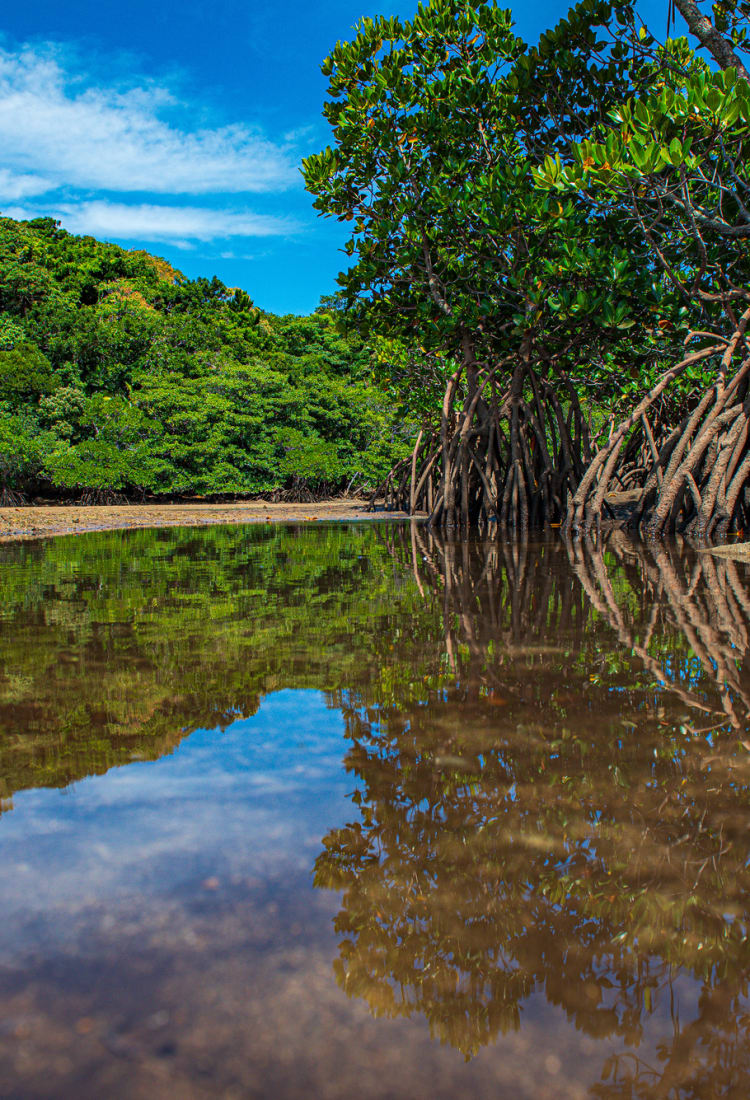
2021.10 Get Back to Nature in Okinawa: Exploring the Region’s Natural Splendor Okinawa’s UNESCO Natural World Heritage Sites are waiting to be explored
Okinawa has long been the go-to destination for Japanese holidaymakers looking for subtropical sun, sea and sand without leaving Japan. For good reason, this island chain far to the south-west of the mainland in the East China Sea is famous for its pristine white sand beaches and clear warm waters, but there’s lots more in the way of natural beauty to be discovered, from biodiverse coral reefs, wild tropical forests and dense mangroves to labyrinthine cave systems, rugged capes and extensive national parks.
A wealth of nature in three sub-tropical national parks
Covering much of the northernmost end of Okinawa is the designated natural World Heritage site of Yanbaru National Park, with its expanses of subtropical evergreen forest covering almost 80% of its 136 square kilometer area, punctuated by mountain peaks and crisscrossed with hiking trails. The area is home to some 1,250 plant and tree species as well as fauna unique to the island, including the Yanbaru long-armed scarab beetle, Japan’s largest beetle species.

Yanbaru National Park offers many opportunities to get up close and personal with subtropical forests.
The Iriomote-Ishigaki National Park spans the two islands and is Japan’s southernmost national park. The interior is largely primeval subtropical evergreen forest, while the coastlines feature extensive mangroves and fringing coral reefs. Although sparsely populated, unique cultural traditions live on such as building techniques that use the local limestone and numerous festivals centered on giving thanks for nature’s harvest.
It’s also worth noting that Iriomote (alongside Yanbaru National Park and nearby Amami Oshima and Tokunoshima) recently received World Heritage site status from UNESCO in recognition of its diverse ecosystem and biodiversity.
Lying some 40 kilometers south of Naha, the Keramashoto National Park covers the 30 islets of the Kerama Islands with their sandy beaches, densely populated coral reefs, exceptionally clear waters and diverse marine ecosystems. As you’d expect, scuba diving and snorkeling are big draws for the park, while in winter, whale watching tours are also popular as humpback whales come to breed in the warm waters.
A treasure trove of coral reefs
The Okinawa islands are home to about 200 types of coral, which collectively form an ocean habitat for countless species of fish and other sea creatures, act as breakwaters, and soak up carbon dioxide while oxygenating the water. The extensive coral reefs found just meters off the coast of many of the islands are also a big reason why Okinawa attracts so many snorkeling and diving enthusiasts.

Scuba divers come from around the world to explore the biodiversity and unique underwater landscapes.
Some of the richest coral life in Okinawa can be found in Keramashoto National Park, within which the inhabited islands of Tokashiki and Zamami serve as the main bases for exploration. With its unparalleled marine biodiversity, the area is a paradise for scuba divers, but snorkelers also find their way here for the turquoise water and beautiful beaches. Aharen Beach on Tokashiki and Furuzamami Beach on Zamami are famous for beautiful crystal-clear water and coralline sand.
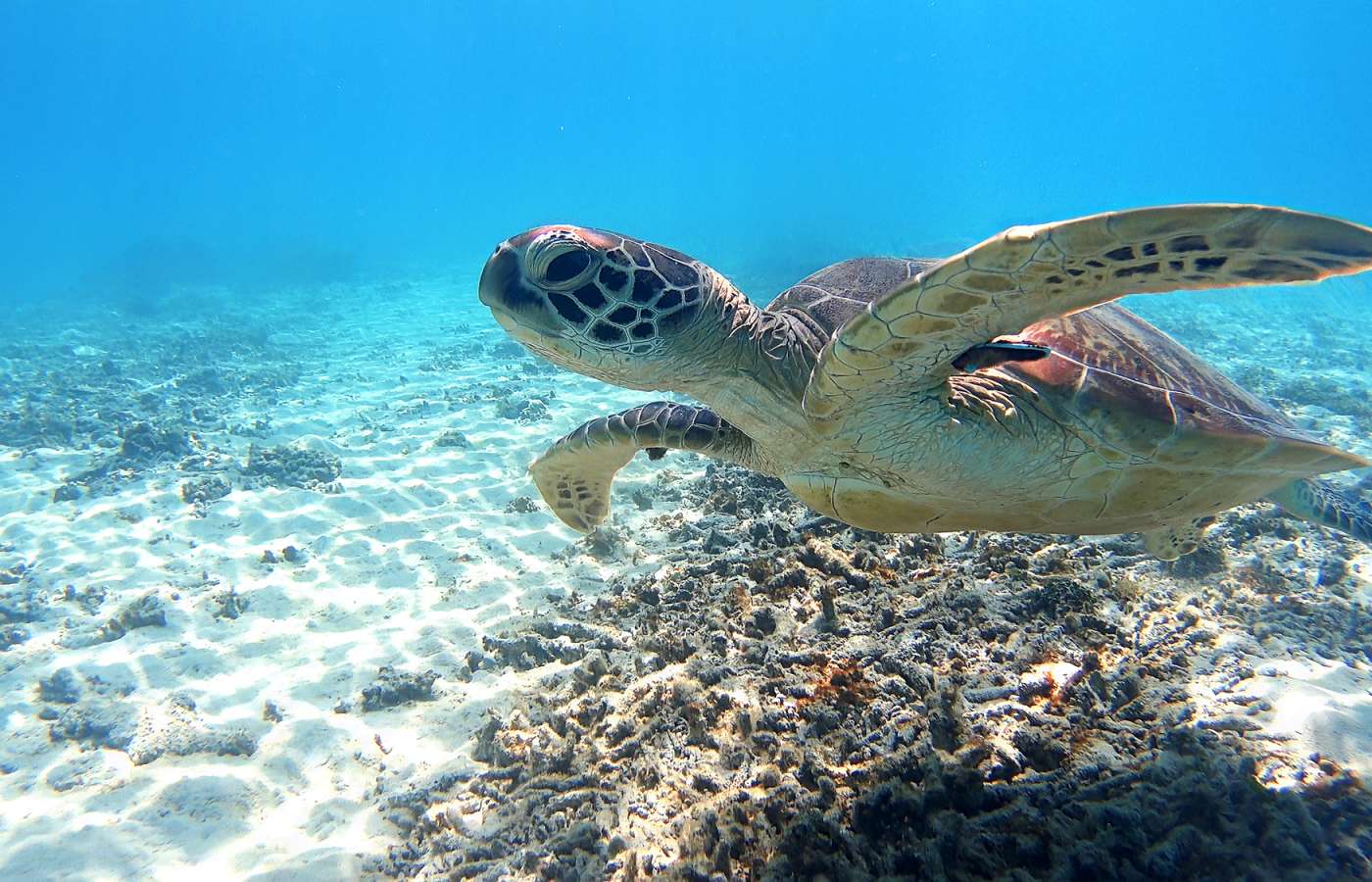
Sea turtles are a common sight on Okinawa’s coral reefs.
Further south in Iriomote-Ishigaki National Park, Ishigaki (a 55-minute flight from Naha) has legendary snorkeling and diving off Yonehara Beach, although note that it’s a little ‘wilder’ than some other spots with no jellyfish nets or lifeguards. Another option from Ishigaki is to take a day trip to Hateruma Island, where Nishihama Beach offers some of the best off-the-beach snorkeling in the region.
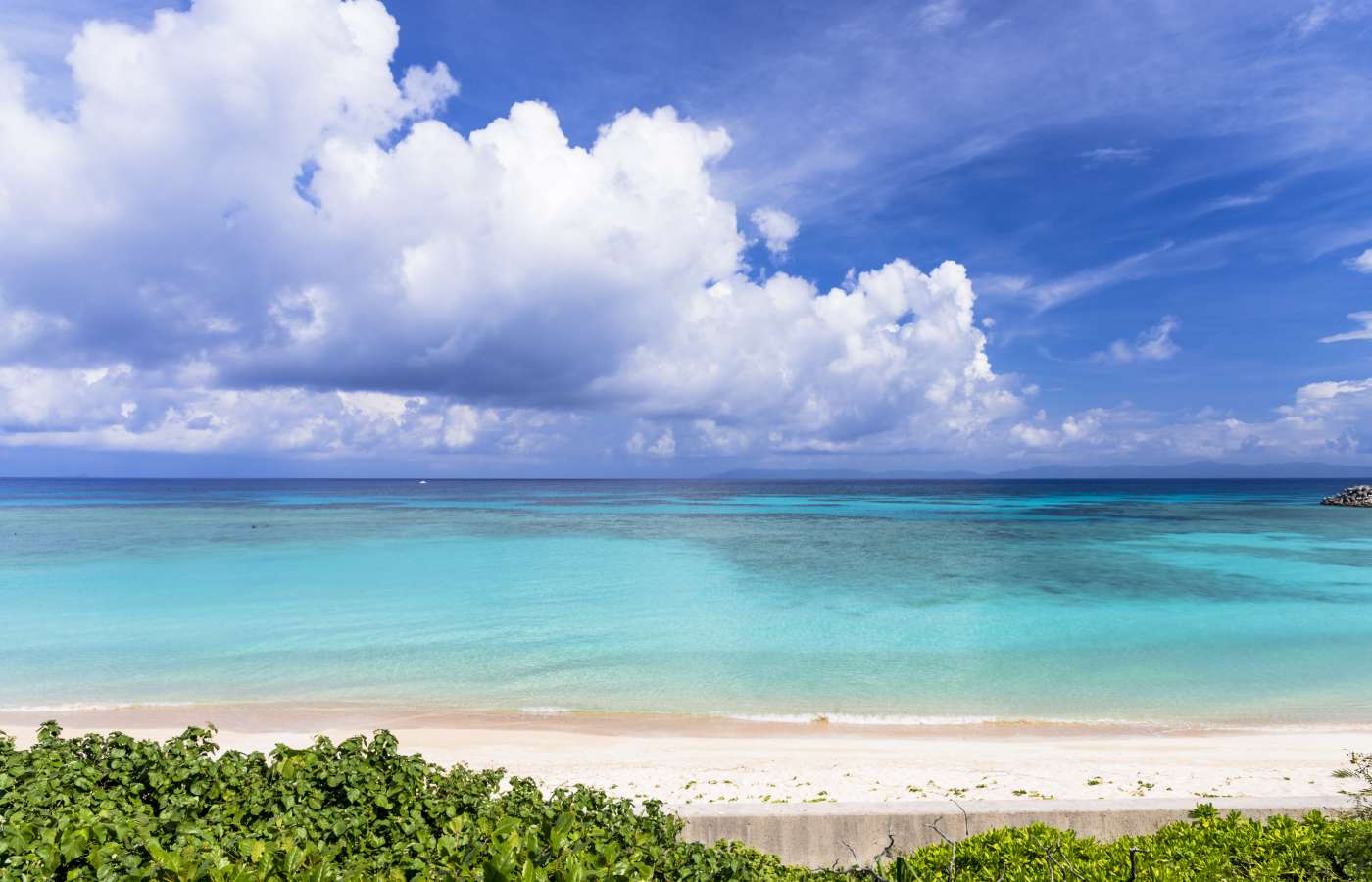
With its pristine white sand, Nishihama Beach is often ranked Japan’s number one beach.
If you’re a beginner, consider taking a snorkeling tour. It’s a great way to spend a morning or afternoon, learning the basics of safe snorkeling while enjoying the colorful and abundant marine life.
Discover the diversity of the region’s wild forests
Humid, subtropical broadleaf evergreen forests are a feature of the Nansei island chain that stretches from Kyushu southwest all the way down to Okinawa and the other Ryukyu islands. The area is home to several endemic species of bird, including the Ryukyu wood pigeon, the Ryukyu green pigeon and the Ryukyu robin. Unique to the island of Okinawa is the almost-flightless Okinawa rail. The best place to catch a glimpse of this rare and endangered species is at the Okinawa Rail Learning Center in the Yanbaru National Park, which also runs a research and breeding program that aims to boost the population.
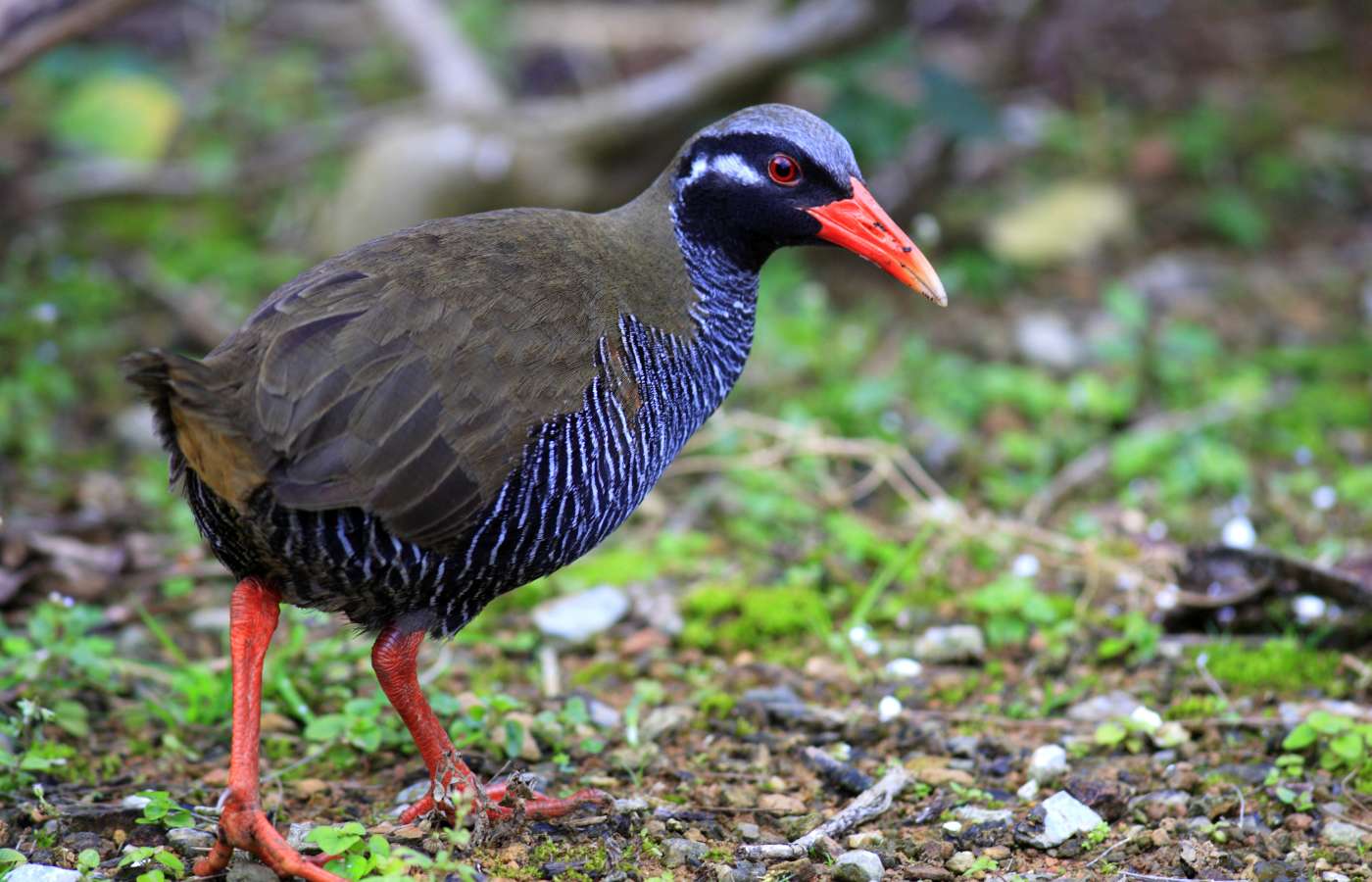
The rare Okinawa rail, a designated living national treasure, is characterized by its orange beak and striped pattern.
Hiking the forest trails is the best way to experience and enjoy the forests, rivers and mountains that make up the interior regions of Okinawa. One such trail makes for an easy-going hike out to Ta-taki Falls, located near Kunigami at the southern end of the Yanbaru National Park. The trail follows the river for a couple of kilometers – you can walk in the river and clamber over the rocks for much of the way – ending up at Ta-taki Falls, where you can relax with a cool swim in the fall basin. Another hidden gem is Hiji Otaki Falls, which showcases the highest drop on Okinawa's main island.

Hiji Otaki Falls is just one of the many waterfalls to explore in Yanbaru National Park.
Explore the unexpected beauty of island mangroves
Mangrove trees form dense, impenetrable forests in saline marshes and estuaries in the northern parts of Okinawa in the Yanbaru National Park as well as on the smaller islands of Iriomote and Ishigaki. Their distinctive roots that rise out of the shallow, sediment-laden waters protect the upper leafy part of the tree from the high tide water, while also providing a habitat to many small fish, mudskippers, crabs and other organisms.

Visit Okinawa’s lush mangroves to discover an ecosystem rich in biodiversity.
Iriomote (a short ferry ride away from Ishigaki) is the second largest of the Ryukyu islands, but is one of the least developed with around 90% of the land still covered by dense jungle. The whole island is part of the Iriomote-Ishigaki National Park and lays claim to Japan’s largest tracts of mangrove forest, notably around the Nakama river estuary. The best way to see the area is to take a tour in one of the flat-bottomed boats that can navigate the shallow waters, or – slightly more energetically – by kayak. Local tour guides explain the unique ecosystem of the mangroves, how the trees have evolved to thrive in the harsh saline conditions, and how they play an important role in protecting the shoreline against erosion from storms.
Get deep into Okinawa’s cave systems
Thanks to the limestone laid down over millennia from the ocean coral that fringes Okinawa and the other Ryukyu islands, many cave systems have formed through the action of water seeping through the ground and slowly dissolving the limestone over hundreds of thousands or even millions of years. Spectacular stalactites hang from the cave ceiling while their counterpart stalagmites gradually build upward, sometimes fusing together where they meet.

Although many of the numerous caves in Okinawa are offshore and therefore best explored with a wetsuit and scuba gear, some can be tackled on foot with the aid of easy-to-navigate walkways and dramatic lighting to show off the natural wonders.
The largest and most well-known cave system in Okinawa is Gyokusendo (part of Okinawa World in southern Okinawa), which extends some five kilometers underground (around a kilometer of which is publicly accessible) and is full of stunning other-worldly limestone rock formations as well as pools of water and the constant, soothing sound of dripping water.

Located on a coral reef, Gyokusendo Cave offers a magical world of blue pools and underground waterfalls.
Photo credit: Okinawa World
Japan’s most beautiful capes and ocean views
Okinawa may be famous for its beaches, but with so much coastline to go around, there’s plenty of variety, including rocky cliffs and capes offering sea air, breathtaking views over picture-perfect ocean and endless horizons.
Cape Manzamo lies on the western coast of Okinawa about 40 minutes’ drive from Naha. It’s famous for its ‘elephant trunk’ rock formation and stunning sunset views.
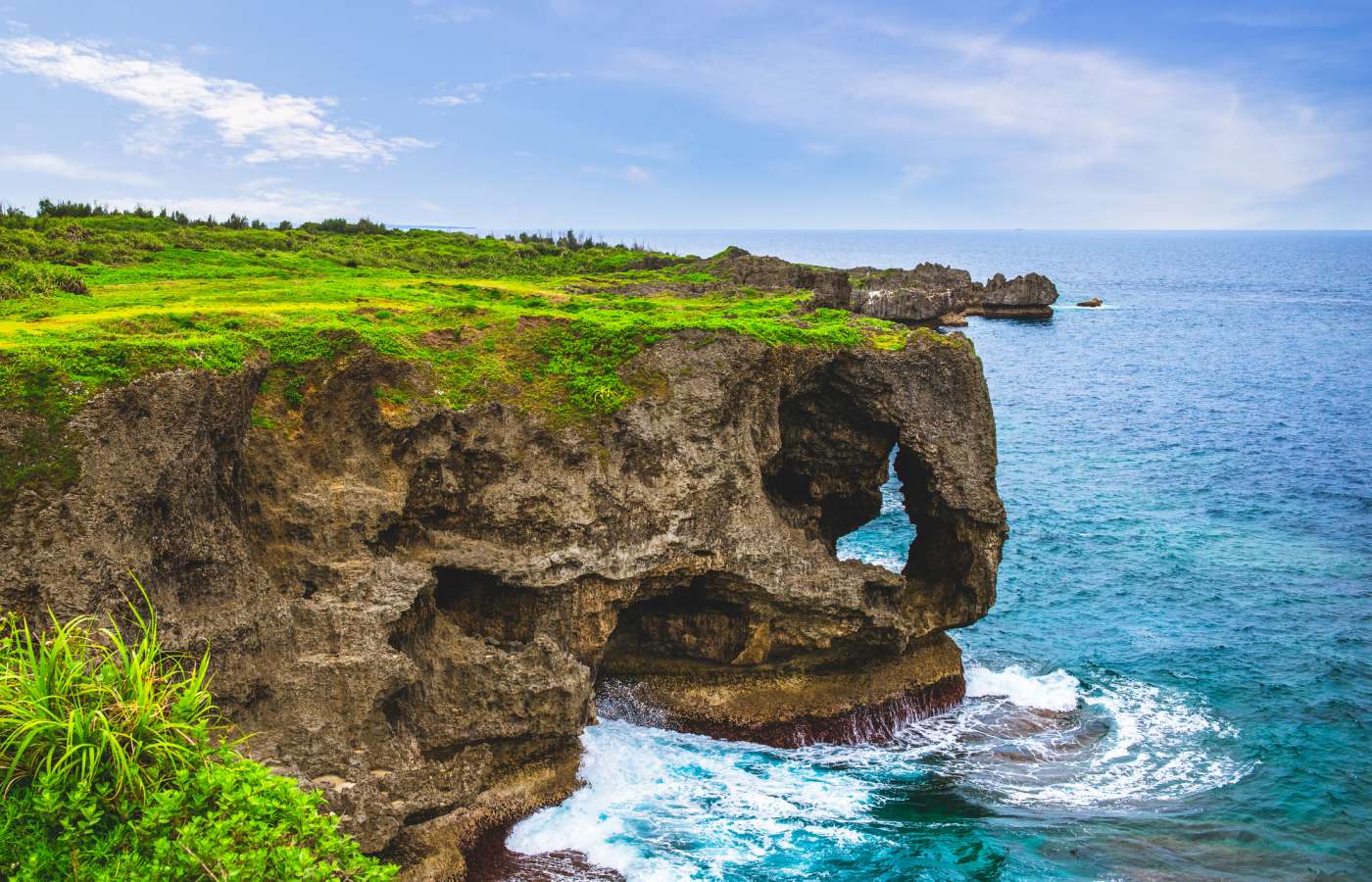
Cape Hedomisaki, located at the northernmost tip of the Yanbaru National Park, is an easterly facing cape known for its rugged limestone cliffs and isolated charm. From the top of the cape you can see a towering rock formation known as the Hedo Point Rock Spire as well as distant views of Yoron-jima, about 20 kilometers to the north-east.
On the island of Ishigaki at the northernmost point of Ishigaki-Iriomote National Park lies another remote cape: Hirakubozaki, with its picturesque, whitewashed lighthouse set in grassland overlooking the transparent blue ocean waters and coral reefs, must rank as one of the most beautiful views on the island.

Head north on the main island and take in the view from Cape Hirakubozaki. You won’t be disappointed.
Stepping out beyond the shoreline
Aside from the pristine beaches, Okinawa is host to lush landscapes and natural wonders that are just waiting to be explored. In particular, the national parks offer a fantastic array of activities, ranging from snorkeling and diving, whale and dolphin watching, to hiking and kayaking in the unspoiled natural beauty of the subtropical forests of the region. Take a step into Okinawa’s natural beauty and see for yourself!
Business hours
Due to measures to prevent the spread of COVID-19, business hours may be subject to change; please check with the venues before visiting.
Information
Okinawa World (Gyokusendo Cave) |
Daisekirinzan |
Related Links
Visit Okinawa |
Yanbaru National Park |
|
WEB:https://www.env.go.jp/en/nature/nps/park/yambaru/index.html |
Iriomote-Ishigaki National Park |
|
WEB:https://www.env.go.jp/en/nature/nps/park/iriomote/index.html |
Keramashoto National Park |
|
WEB:https://www.env.go.jp/en/nature/nps/park/kerama/index.html |




















































